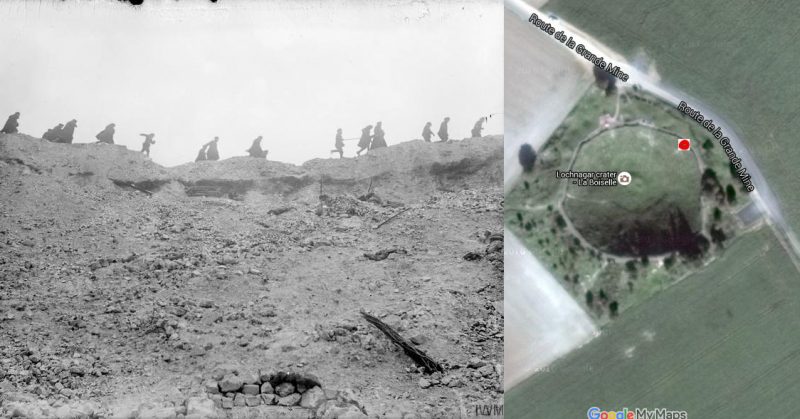On July 1st, hundreds of spectators gathered to witness a bugler play the Last Post, Britain’s salute to the war dead, at 7:28 am in the French farm country north of Paris. That date and time marked the start of the World War I Battle of the Somme, a battle resulting in the deaths of hundreds of thousands of British soldiers.
The crater in the farm country was the result of 30 tons of explosives British tunnelers had placed beneath German lines. This is a historic site. It’s owned and maintained by Richard Dunning, 72, a Guildford resident and son to a bus mechanic. After reading about the site, Dunning bought the property on July 1st, 1978, fearing it would be demolished and lost to history. Fearing reprisals from the spirits of fallen soldiers, Dunning, slightly in jest, refuses to charge admission and prefers to make the historic site open to the public.
Dunning’s work is appreciated, however. He has attracted attention from several historians, one of them being Martin Middlebrook, who wrote the book First Day on the Somme.
When Dunning first purchased the site, Lochnagar Crater was nothing more than an overgrown scar on the French countryside. The crater is 300 feet across and 70 feet deep and had previously been used as a motorbike track. Unfortunately, it seemed the echo of the blast heard 200 miles away in London had faded from memory some 62 years before. Dunning, however, was entranced by the crater when he read about it in a John Masefield book, and even more so once he once he saw it.
Masefield references old battle sites as areas which get covered in a year or two, leaving only memories behind. The Crater, however, did not fade so quickly, especially for Dunning, a frequent visitor to the site. He only intended to purchase a small parcel of the crater, but when the owner offered him the entire plot, Dunning could not say no to this.
In an attempt to take the pressure of French allies fighting in Verdun, 170 miles to the southeast, British soldiers intended on leading an attack on German lines near the local river. British forces, however, had a dismal start on the morning of the attack. The assault was scheduled to start with the Lochnagar detonation and others nearby. The blast shattered the earth and rocked British trenches, hurling chunks of earth high into the air.
While awe-inspiring and enormous, the blast and accompanying preparatory bombardment proved ineffective. German gunners who took refuge underground rushed to their machine guns shortly after the blast, and soon the crater became a refuge for some and a death trap for others. As the German gunners set up on two sides of the crater, British soldiers scrambled for cover. Tens of thousands of soldiers were killed on the first day alone. The battle would extend into November and be remembered as a national tragedy.
Dunning was not willing to see this national tragedy fade into history, and his efforts were not in vain. On October 31st, 1998, a soldier’s remains were spotted and unearthed in the crater. The remains were identified as those of PVT George Nugent, 28, of Newcastle. 84 years after his death, Nugent was finally given a proper burial. This year, buglers and bagpipers will play for the ceremony and singers will perform “Hanging on the Old Barbed Wire.” Some spectators will also participate by blowing trench whistles identical to those used to signal the attack. The ceremony to honor this soldier is undoubtedly overdue, but this is one of those instances where it truly is better late than never.
